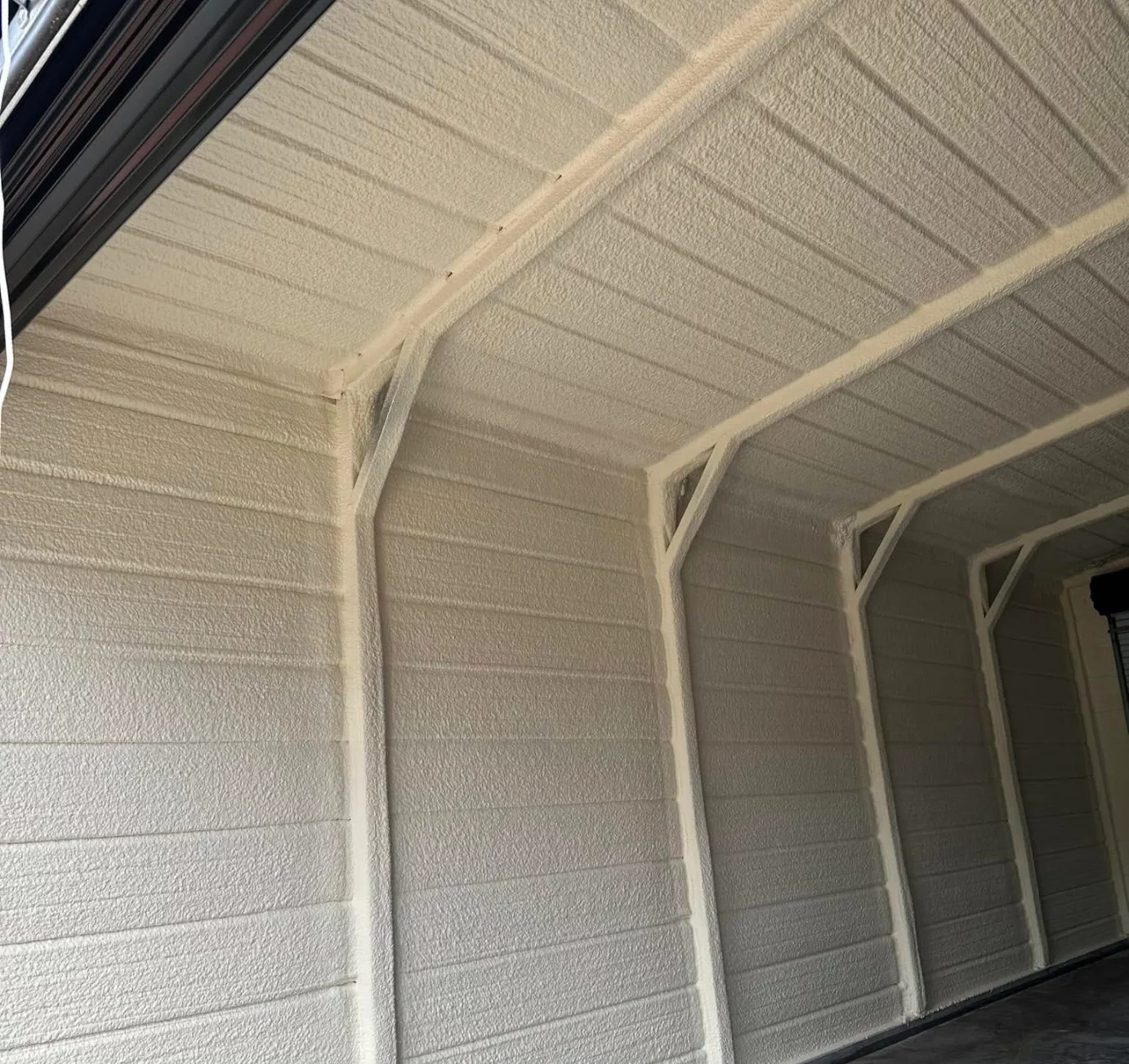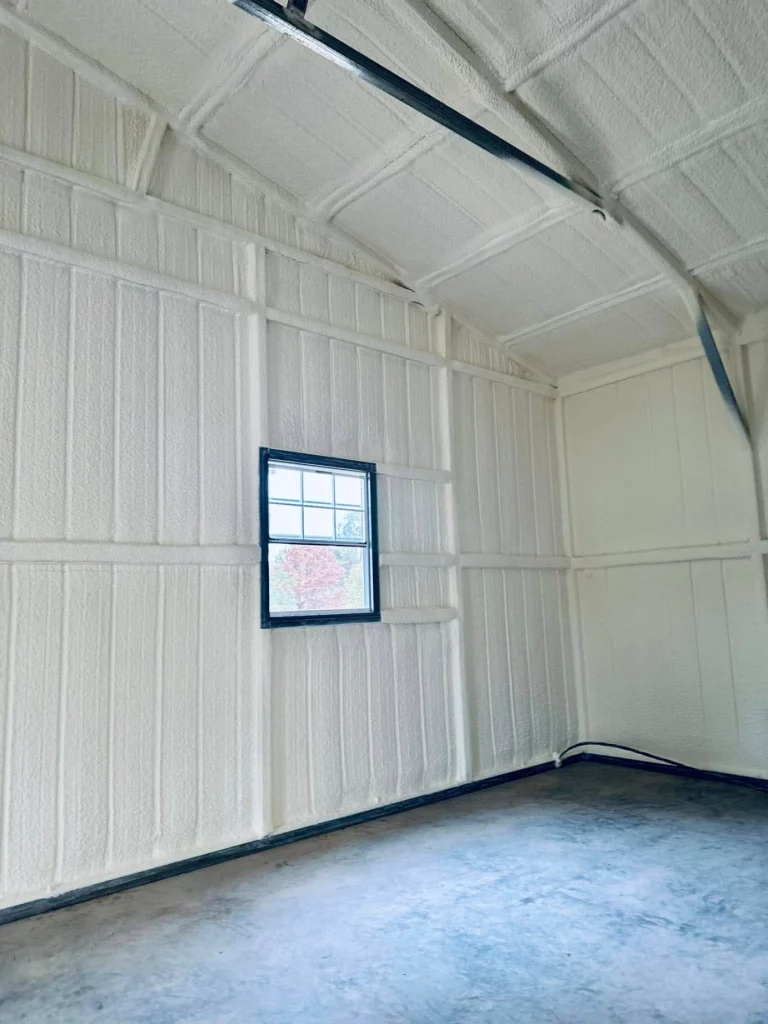
Spray foam insulation creates an impermeable barrier that blocks moisture infiltration at the source, eliminating the conditions mold requires to thrive. Unlike traditional insulation materials that allow air and moisture movement, spray foam expands to seal gaps completely, preventing condensation formation and maintaining consistent interior humidity levels below the 60% threshold where mold growth accelerates.
The effectiveness stems from spray foam’s unique cellular structure and air-sealing properties. When applied properly, it forms a continuous thermal envelope that eliminates thermal bridging and prevents warm, humid air from contacting cold surfaces where condensation typically occurs. This comprehensive approach addresses moisture control at multiple levels, making it significantly more effective than conventional insulation methods for preventing mold-related issues.
LMC Insulation has observed consistent results across residential and commercial applications, with properly installed spray foam systems maintaining moisture-free environments for decades when combined with appropriate ventilation strategies.
Moisture infiltration occurs through multiple pathways in building envelopes. Air leakage accounts for approximately 98% of moisture problems in structures, according to the Building Science Corporation. Traditional insulation materials allow air movement, creating opportunities for humid air to contact cold surfaces and condense.
Mold requires four basic conditions to establish colonies: moisture content above 16%, organic food sources, temperatures between 32-100°F, and oxygen. Most building materials provide adequate food sources, and temperature ranges remain within mold-friendly zones year-round. Controlling moisture becomes the primary defense mechanism.
Bonus Tip: Check relative humidity levels in basements and crawl spaces during seasonal transitions. These areas typically show the first signs of moisture problems that can spread throughout the structure.
Closed-cell spray foam provides the most comprehensive moisture protection through its impermeable structure. Each cell remains sealed, creating a vapor barrier that prevents moisture transmission at the molecular level. Open-cell spray foam offers different benefits, providing air sealing while remaining vapor permeable for controlled moisture management.
| Spray Foam Type | Moisture Transmission Rate | Air Sealing Capability | Vapor Barrier Properties |
|---|---|---|---|
| Closed-Cell | 0.8-1.5 perms at 2 inches | Complete sealing | Excellent vapor barrier |
| Open-Cell | 8-16 perms at 3.5 inches | Excellent air sealing | Vapor permeable |
| Fiberglass Batts | 30+ perms (reference) | Minimal sealing | No vapor barrier |
The cellular structure creates multiple defense layers. Closed-cell foam expands to 30-40 times its liquid volume, filling every crevice and creating mechanical adhesion to substrate surfaces. This expansion eliminates air movement pathways that traditional insulation cannot address.
Bonus Tip: Monitor indoor humidity levels using digital hygrometers. Maintain levels between 30-50% for optimal comfort and mold prevention, regardless of insulation type.
Different climate zones present unique moisture challenges requiring tailored approaches. Hot, humid climates like those found in Arkansas experience year-round moisture pressure, while cold climates face condensation risks during heating seasons.
In mixed-humid climates, vapor drive occurs in both directions seasonally. Summer months push moisture inward through exterior walls, while winter heating creates outward vapor pressure. Spray foam addresses both scenarios by eliminating the air movement that transports moisture-laden air to condensation surfaces.
Coastal areas experience additional salt air moisture that accelerates corrosion and creates persistent humidity challenges. Closed-cell spray foam provides superior protection in these environments due to its chemical resistance and complete moisture barrier properties.
Understanding performance metrics helps evaluate spray foam’s effectiveness compared to alternative moisture control strategies.
| Performance Metric | Closed-Cell Spray Foam | Open-Cell Spray Foam | Traditional Methods |
|---|---|---|---|
| Air Leakage Reduction | 85-95% | 75-85% | 10-20% |
| R-Value per Inch | 6.0-7.0 | 3.5-4.0 | 2.2-3.8 |
| Moisture Resistance | Excellent | Good | Poor to Fair |
| Structural Strength | 25-50 PSI | 0.5-1.0 PSI | None |
Research from Oak Ridge National Laboratory demonstrates that spray foam applications reduce air infiltration by an average of 87% compared to traditional insulation systems. This reduction directly correlates with moisture control effectiveness, as air movement transports moisture to problem areas.

Basement and crawl space applications provide the greatest return on moisture control investment. These below-grade areas experience constant moisture pressure from soil contact and groundwater vapor transmission. Spray foam creates a complete encapsulation system that transforms problematic spaces into conditioned, usable areas.
Attic applications address stack effect moisture movement, where warm air rises and creates pressure differentials. Sealing the building envelope at the roofline prevents humid air from entering and condensing on cold surfaces during temperature swings.
Wall cavity applications eliminate thermal bridging and air movement through wall assemblies. This approach particularly benefits older structures with settling issues that create air leakage pathways over time.
Professional assessment determines the most appropriate spray foam type and application strategy for specific moisture challenges. Existing moisture problems require remediation before foam installation to prevent trapping moisture within building assemblies.
Ventilation systems require evaluation to ensure adequate fresh air exchange after air sealing. Overly tight buildings can create indoor air quality issues without proper mechanical ventilation. Calculate ventilation requirements based on building volume and occupancy patterns.
Building code compliance varies by jurisdiction, particularly regarding vapor barrier requirements and fire protection measures. Some areas require thermal barriers over spray foam applications, while others have specific thickness requirements for different building zones.
Timing considerations include temperature and humidity conditions during application. Extreme weather affects foam expansion and curing characteristics, potentially compromising long-term performance.
Closed-Cell Spray Foam Installation – Complete moisture barrier system providing maximum protection against water intrusion and vapor transmission. Ideal for basements, crawl spaces, and exterior wall applications requiring superior moisture resistance.
Open-Cell Spray Foam Application – Vapor-permeable air sealing solution that controls moisture movement while allowing controlled drying potential. Perfect for attic spaces and interior applications where vapor permeability benefits overall moisture management.
Air Sealing Services – Comprehensive envelope sealing targeting specific air leakage pathways that contribute to moisture problems. Focuses on critical areas like rim joists, penetrations, and assembly joints where moisture infiltration commonly occurs.
Foundation Insulation Systems – Below-grade moisture control solutions addressing groundwater vapor transmission and thermal bridging through foundation walls. Combines insulation performance with long-term moisture protection for basement and crawl space applications.
Moisture testing confirms baseline conditions and identifies active water intrusion requiring attention before foam installation. Surface preparation includes cleaning substrates and ensuring proper adhesion conditions. Temperature and humidity monitoring during application prevents installation issues that compromise moisture resistance.
Closed-cell spray foam maintains consistent moisture barrier properties regardless of ambient humidity levels. Open-cell applications may require longer curing times in high-humidity conditions but achieve full performance once properly cured. Ventilation during installation helps optimize curing conditions.
Priority areas include below-grade spaces, rim joist assemblies, and attic floor planes where temperature differentials create condensation risks. Wall cavity applications become important in older structures with significant air leakage issues contributing to moisture problems.
Spray foam insulation prevents mold and moisture issues by eliminating air movement pathways and creating effective vapor barriers where appropriate. The technology addresses moisture control at the source rather than managing symptoms, providing long-term protection against the conditions that enable mold growth.
Success depends on proper assessment, appropriate product selection, and professional installation techniques that ensure complete air sealing and vapor control. When combined with adequate ventilation and moisture management practices, spray foam creates healthy indoor environments that resist mold development.
Evaluate specific moisture challenges, building characteristics, and local climate conditions to determine the most effective spray foam strategy for long-term moisture control and indoor air quality benefits.
Moisture problems require immediate attention to prevent structural damage and health concerns. Professional assessment identifies the root causes of moisture infiltration and determines the most effective spray foam solutions for your specific situation.
LMC Insulation provides comprehensive moisture control evaluations and spray foam installation services throughout the region. Our experienced team understands local climate challenges and building performance requirements that affect long-term moisture management success.
Contact LMC Insulation at [email protected] or (479) 351-6175 to schedule a moisture assessment and discuss spray foam solutions that protect your property investment and indoor air quality for decades to come.
Properly installed spray foam maintains moisture barrier properties indefinitely without maintenance requirements. Visual inspections every few years confirm continued adhesion and identify any damage from building settlement or renovations. Unlike traditional moisture barriers, spray foam does not degrade or develop gaps over time when installed correctly.
Spray foam adapts to seasonal moisture variations without performance degradation. Closed-cell applications provide consistent vapor barrier properties regardless of humidity fluctuations. Open-cell systems accommodate natural moisture movement while maintaining air sealing benefits throughout seasonal cycles.
Post-installation moisture issues typically indicate incomplete air sealing or moisture sources not addressed during preparation. Professional assessment identifies problem areas and determines appropriate remediation strategies. Additional foam application can address newly identified air leakage pathways.
Spray foam effectively prevents moisture infiltration through air movement and provides vapor barriers where specified. However, bulk water intrusion from plumbing leaks, roof damage, or foundation cracks requires separate waterproofing solutions. Comprehensive moisture control combines spray foam with appropriate drainage and waterproofing systems.
Spray foam provides superior longevity compared to traditional vapor barriers, which can tear, settle, or develop gaps over time. The adhesive properties and expansion characteristics create permanent seals that maintain effectiveness for the building’s lifetime. Traditional methods require periodic inspection and replacement to maintain moisture control benefits.